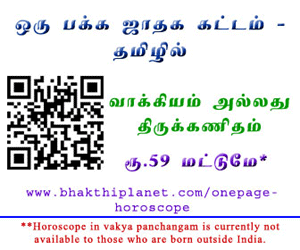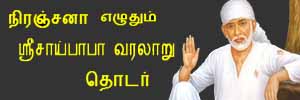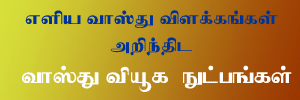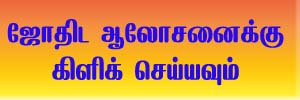Is parihara pooja at Kalahasti sufficient to overcome Kalasarpa dhosham?
Niranjana
The diamond may be an expensive gem, but if you want to wear it as an ornament, you have to  embed it in that less expensive metal, gold. Just as it is imperative to mount a diamond in gold, so also, no matter how great your horoscope is otherwise, you have to perform redemptory rituals (pariharam) if you suffer from naga dosham. It is advisable to offer worship to Sri Nagathamman, the snake goddess, on Nagapanchami day.
embed it in that less expensive metal, gold. Just as it is imperative to mount a diamond in gold, so also, no matter how great your horoscope is otherwise, you have to perform redemptory rituals (pariharam) if you suffer from naga dosham. It is advisable to offer worship to Sri Nagathamman, the snake goddess, on Nagapanchami day.
No great success can be achieved before the age of thirty, if one is afflicted by Kalasarpa dosham. In the first place, marriage will be delayed, says astrology. You have to take divine help to transform Kalasarpa dhosham into Kalasarpa yogam. Your faith in god should be such that you should walk fearless with the conviction that that no evil, no harm, or any bad element can ever touch you.
The saying goes that nobody gives like Rahu and nobody destroys like Ketu. It is the general belief that one would suffer from Naga dhosham, if Rahu and Ketu are not well placed in one’s horoscope. Srikalahasti, near Tirupati, and Tirunageswaram, near Kumbakonam, are the two places to perform redemptory rituals (pariharam) to overcome this dhosham.
Vayu and Adisesha, it is said, battled it out to decide who between them was more powerful.
“Okay, let us have a contest,” they decided. Whoever moved the biggest of the hills could be considered the most powerful, they agreed. They moved the moutain with such a force that it blew up skyward and fell down in three pieces. One such piece was the hillock now revered as Srikalahasti. The white Vayu Lingam, in the temple, is said to induce the flickering of the lamp in the sanctum, even in the absence of a visible air passage, when the main door is closed. It is said that the flicker is caused by the Lord’s breathing. The temple is among the Panchabhootha sthalams that represent Lord Shiva as the embodiment of the five elements. He is worshipped as Vayu, air, in Srikalahasti. Saint Nakkeerar (Third century BC) praises Sri Kalahastheeswara Swamy in many verses and refers to SriKalahasti as Dakshina Kailas. According to popular belief, Nakkeerar was cured of leprosy after worshipping here. The divine consort, Goddess Gnanaprasunambika Devi is the bestower of gnana, wisdom. She resides there as the giver of knowledge to Her devotees.
However, it is prudent to do redemptory rituals in Tirunageswaram before or after performing the parihara pooja in Srikalahasti. This is similar to the injunction to devotees to worship at Tiruchanur, the abode of Sri Alamelumanga Thayar, before or after visiting Tirumala. According to the parihara sasthram, even if one has performed redemptory rituals in Srikalahasti, to get rid of Kalasarpa dhosham completely, one has do the same pooja in Tirunageswaram too.
Rahu and Ketu are the cause of Kalasarpa dhosham/Sarpa dhosham/Naga dhosham. Pariharam rituals to placate Ketu should be performed at Srikalahasti and redemptory poojas to Rahu should be done at Tirunageswaram. Wisdom comes from knowledge. However, wisdom can dawn, only when Ketu dhosham disappears. The mind will then become clear, and bhakti will blossom in the heart of the afflicted individual.
There once lived a trader by name, Supriyan. He was a staunch devotee of Lord Shiva. He also worshipped the Naga devata, snake god. He would pray at Tirunageswaram daily, without fail. One evening, he went to the temple after closing shop, with the day’s earnings, which were considerable. It was an evening of special pooja, and, by the time it concluded, he felt, it was too late and too dangerous to venture out with the money. He decided to spend the night in the temple. With this resolve, he stretched himself in a corner of the shrine and fell asleep.
At this juncture, there came into the temple a gang of thieves. They spotted the sleeping form of the merchant. “Looks like this fellow is Supriyan, the merchant in the town! And, I think, the bag near him contains money!” the gang leader told his fellow-burglars.
One of the burglars approached the sleeping merchant, brandishing a knife, ready to kill him, if necessary. The trader awoke with a start, and, sensing trouble, ran into the sanctum and, inadverdently, clutched the Lingam of the Lord of Tirunageswaram for dear life. It was almost a re-enactment of the puranic episode, in which Markandeya embraced the Lingam to ward off Yama, the god of death.
A miracle ensued. A snake issued forth from the Lingam of Sri Naganathaswamy, the presiding deity of Tirunageswaram, and hissed menacingly at the thieves. The burglars were shocked, and ran for their lives. The Lord of Tirunageswaram had saved the life and wealth of Supriyan, His devotee!
Therefore, it is clear, that Srikalahasti will help us rid of Ketu dhosham, while a pooja at Tirunageswarm will enable us to get rid of Rahu dhosham. Rest assured, for we could hope to have a clear mind and a comfortable life, only if we break free of the dhosham caused by Rahu and Ketu.
It is imperative that jnana, wisdom, and dhanam, wealth, should come together. Only then can we aspire to live a life of meaningful human existence. A parihara pooja at both Srikalahasti and Tirunageswaram would enable us to achieve this goal.
© 2011 bhakthiplanet.com All Rights Reserved















